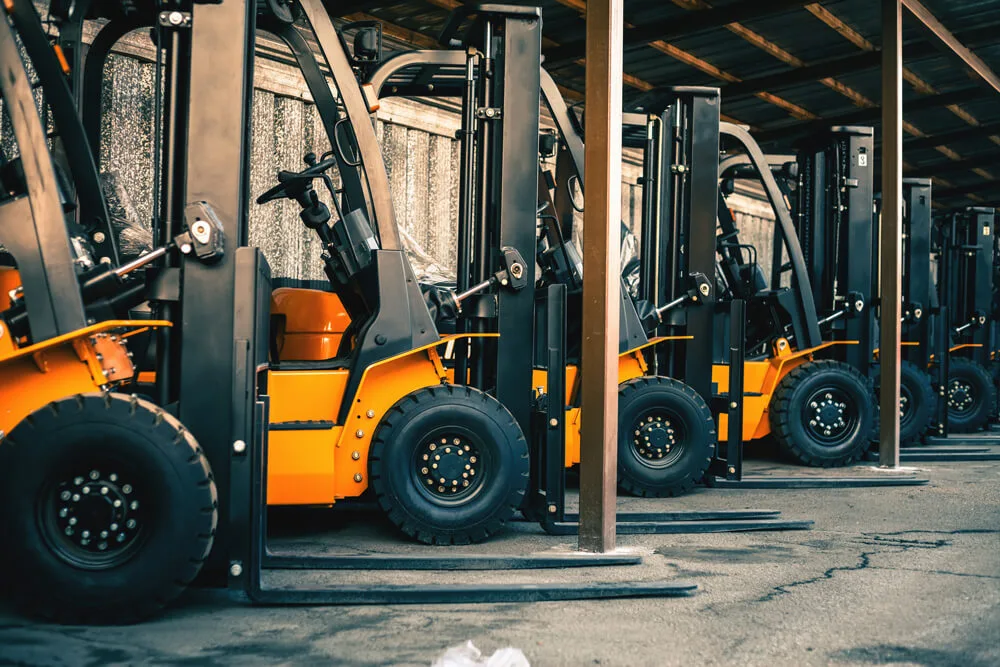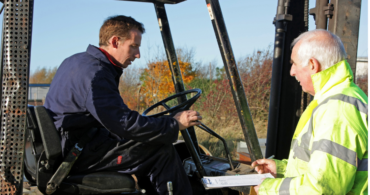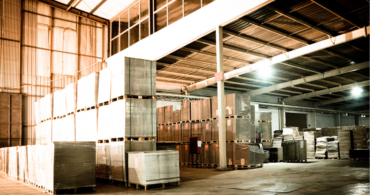Whether you’re shopping for a brand new forklift or used material handling equipment, the process can be intimidating. Prices can vary greatly, even for similar types of forklifts. To help during the buying process, here is everything you need to know about new forklift prices.
Many factors add up to determine the price of a forklift. Understanding these nuances makes the buying process much more manageable.
In addition, you can lower costs by purchasing used forklifts. However, there are more factors to consider when buying used equipment. We’ll begin by reviewing the main factors affecting new and used forklift pricing.
The most significant impact on the cost of a new forklift is the type (model) you hope to buy.
Types of forklifts
According to OSHA (the Occupational Safety and Health Administration), there are seven classifications of powered industrial trucks (their term for forklifts). However, a wide variety of trucks fall under each of the OSHA classifications. Here are the main lift trucks used in warehouses and their price ranges. All of the listed prices are estimates for a new basic unit.
Four-wheel counterbalance forklifts
These are what everyone pictures when they think of a warehouse forklift. Four-wheel counterbalanced forklifts have a three-point suspension system that helps distribute the vehicle’s weight. Two of these three points are the front tires, and the third is the pivot point between the rear wheels on the back axle. The area between these three points is known as “the stability triangle.” There are stand-up and sit-down varieties of four-wheel counterbalance forklifts.
A new, standard capacity, electric four-wheel counterbalance forklift typically costs between $20,000 and $45,000, which includes the battery and charger.
Side loaders
Side loader forklifts look similar to a four-wheel counterbalance forklift, except the forks are positioned sideways. Side loaders are used in narrow aisles (because the truck can load and unload without turning) and to carry oversized inventory, like pipes and lumber.
A basic side loader costs between $30,000 and $50,000.
Pallet jacks (aka, walkie pallet trucks)
A pallet jack is either manual (the operator pumps a jack handle to lift loads) or battery-powered. Pallet jacks do not have a cab. Instead, an operator stands either on a platform at the truck’s rear or walks behind it. The driver uses a long handle and hand control to steer, load and unload the vehicle.
Manual pallet jacks typically cost between $500 and $1,500, while battery-powered machines can run between $1,500 and $4,000.
Order pickers (aka, cherry pickers)
The job of most order pickers is to lift the operator instead of a heavy pallet. The operator travels a warehouse, rising and lowering as needed, to grab one or two inventory units at every stop. These machines are incredibly efficient because they can safely raise and lower the operator while moving.
Order pickers typically range between $5,000 and $15,000.
Reach forklifts
Reach forklifts can lift pallets much higher than a standard forklift. Warehouses with several rows of tall shelves or deep shelves that hold multiple pallets utilize reach trucks. Reach trucks are not counterbalanced. Instead, they have front stabilizing legs that help offset the weight and manage the load. Reach trucks also have very long tines that can extend deep into the racks. A reach forklift only works on a smooth surface due to its low undercarriage and stabilizing legs, making it strictly an indoor forklift.
Reach forklifts typically cost between $30,000 and $60,000.
Brand
Besides the type of forklift, the machine’s brand has the most immediate impact on the new forklift price. There are many different manufacturers of forklifts, and they each have qualifications. For example, some manufacturers stress their craftsmanship and the durability of their machines. These forklifts tend to cost more but also have extended warranty periods. Others prioritize affordability but frequently come with shorter warranties.
Capacity
The next factor to significantly impact new forklift cost is capacity. A forklift that can manage heavier loads is considerably more expensive than one intended for light-duty operations. The reason is that it requires more raw material to manufacture a higher-capacity forklift. The cost of those materials is reflected in the sales price.
The average counterbalanced forklift has a weight capacity of 6,000 pounds or less. However, industrial forklifts often need to handle loads that weigh twice as much, while some outdoor, all-terrain forklifts need to manage cargo that weighs more than 20,000 pounds.
A standard forklift with a capacity of 6,000 pounds typically costs half the price of a forklift with a capacity of 12,000 pounds.
Engine and fuel type
Forklifts either have electric or internal combustion engines. Those with internal combustion engines run on different fuel types, such as diesel and propane gas. Diesel forklifts require heavier, more durable parts due to how their engines operate, which generally makes them more expensive than propane gas forklifts. Propane gas forklifts have a lower upfront cost, and the price of propane is typically much lower than the cost of diesel fuel.
Diesel and propane combustion engine forklifts are typically less expensive than electric ones. However, that does not mean that they are less costly to own.
Electric forklifts generally have higher upfront costs than internal combustion engine forklifts. An electric forklift new price is higher because the buyer pays for a lifetime of “fuel” at the time of purchase (i.e., the battery and charger).
So, while a combustion engine forklift is less expensive up front, the fuel (and maintenance) costs add up. Over time, the long-term operating costs of a combustion engine forklift are usually higher than the long-term operational costs of an electric forklift, making electric forklifts the more cost-effect machines.
Mast size
A forklift’s mast, also known as an upright, is the vertical component attached to the forks. The mast controls the raising, lowering and tilting of a load. Masts are classified by “stages,” which is how high a forklift can raise a load. A single-stage mast has the lowest lifting capability, while a quad-stage mast has the highest.
Most forklifts have a three-stage mast. However, some forklifts require a shorter mast to fit into combined spaces, while others need a taller mast to reach extremely high areas. Generally, a forklift with a tall mast is more expensive than one with a short mast.
Tire type
The cost of new forklift tires also affects the overall price. Most forklifts come standard with either cushion tires or air-filled pneumatic tires. Additional options include solid foam-filled tires, tires with sipes (for slick conditions) and non-marking tires. Anything above standard tires will increase the forklift’s price.
Hydraulics
A three-way hydraulic valve is standard on most lift trucks. This type of system ensures that the mast can lift and tilt smoothly. However, some operations require more than basic lifting and tilting. Add-ons like a paper roll clamp or a slip-sheet attachment require an extra valve section, which increases the cost of a forklift.
Features
Nearly every aspect of a forklift can be upgraded or modified, from the forks to the paint. Some examples include a custom paint job (like adding your company’s colors and logo) and features for working with hazardous materials.
Every additional feature increases a forklift’s price.
Accessories
When considering purchasing a forklift, it is necessary to think about the price for forklift accessories. There are seemingly endless numbers of forklift accessories, and most cost money. Examples include adding a paper roll clamp or specialized material handling features for cold storage. Each additional heavy-duty component adds to the overall cost.
All of these features impact the cost of a new forklift. However, when shopping for a used machine, there are a few more factors to consider.
Condition
It’s no secret that forklifts are used hard. After all, it’s what they’re designed to do. However, when buying a used forklift, the goal is to find one that’s been used less hard than the rest. There are a few environments that can cause extra wear and tear on a forklift, such as:
- Very cold areas. Cold temperature is tough on rubber, and most engine and hydraulic seals are entirely rubber. Despite being designed to handle extreme use, cold temperature causes the rubber to become brittle, shortening the seals’ lives.
- Humid environments. Humidity can lead to water buildup, which can leak into electrical systems or cause a buildup of rust and corrosion.
- Coastal environments. Not only are some coastal areas prone to humidity, but their proximity to salt water increases the likelihood of rust and corrosion.
- Outdoor machines. Exposure to the elements adds another complication, which is why these machines need to be inspected carefully.
The caveat to finding a used forklift in excellent condition is that you will pay more for it. The better the condition, the higher the price.
Hours
Where a car’s usage is measured in miles, a forklift’s usage is measured in hours. A general rule of thumb is that operating a forklift for an hour is the same as driving 15 miles in a car.
This equation can help you approximate the use of a forklift. For example, you know that a car with 90,000 miles on it has seen a lot of roads. Well, that’s roughly equivalent to a forklift with 6,000 hours of operation. While this isn’t an exact one-to-one conversion, it helps put a forklift’s usage into perspective.
However, hours operated is only a portion of the story. As mentioned above, a forklift that spent 6,000 hours hauling hazardous waste has led a harder life than one that spent the same amount of time stacking pallets of teddy bears.
Year
Very few products increase in value as they age, and a forklift is not a bottle of fine wine. An older forklift, naturally, has older, and in some cases outdated, components and features. The machines have also likely been around the block a couple of times and have more wear and tear.
Ultimately, the condition of the machine is more important than its age. Still, it’s a good idea to shop for forklifts less than 10 years old. Anything older than 10 years will likely be priced to sell and may look like a bargain. However, it’s not much of a bargain if you’re shopping for another forklift in a year.
Supply and demand
Similar to the used car market, the price of a used forklift is greatly influenced by the seller’s supply and the number of people who want to buy them. For example, some specialty forklifts are manufactured in low amounts. So, it isn’t easy to find them on the used market. The scarcity of the item means that when one does hit the used market, the price tends to be higher.
However, the opposite is frequently true for more common forklifts, like the tried-and-true four-wheel counterbalance forklifts. Since nearly every forklift maker manufactures these machines, there tends to be a surplus on the used market. If a seller is tired of sitting on several of these forklifts, they may be priced to sell.
Warranty
If you want a long-term warranty, you should buy a new forklift.
Used forklifts sold “as is” typically do not come with a warranty, and don’t even bother asking for one. If you buy one of these machines, you know you’re gambling.
Other used forklifts, those without corrosion all over the engine block, may come with limited warranties. Some possibilities include a 30-day parts and labor warranty, a 60-day parts and labor warranty, or a six-month powertrain warranty. You may have the option to buy an extended warranty for the vehicle, but you need to weigh the cost of the warranty versus the potential cost of the repairs. Expect to spend at least three figures for an extended warranty, and that price could creep into low four figures.
Negotiating
Buying a used forklift is like buying a used anything. You can always negotiate. The strength of your ability to haggle is predicated on many of the previously listed factors, especially supply and demand. Who knows what a motivated seller will throw in to close a sale? New tires? An extended warranty? Upgraded attachments? You never know until you ask.
Pros and cons
New forklift pros
- Latest model and features.
- Long-term warranty.
- It should last the anticipated lifetime with proper maintenance (and if not, you have a warranty).
- All new parts, and in the future, you will know when and which parts were repaired.
- Your final purchase is precisely what you want (based on affordability).
New forklift con
- Expense.
Used forklift pros
- The cost is significantly less than purchasing new.
- Greater ability to negotiate (in most cases).
Used forklift cons
- Wear and tear.
- Homework is required. If you don’t do enough research, you may pay more than you should.
- It probably won’t work as well as a new model.
- It will not operate as long as a new model (although the ratio of “money spent to operation time” may be equivalent to a new forklift).
- More immediate maintenance at a potentially higher cost.
- No or very limited (or very costly) warranty.
As you can see (and read), the answer to “how much are forklifts?” is complex. Fortunately, as long as you are prepared for the intricacies of shopping new forklift prices, you should find what you need at a price that suits you.
For answers to all forklift-related questions, especially forklift battery and accessories, you can always reach out to our forklift repair service team at (888) 316-2459. To learn more about Texas Motive Solutions and discover everything we can do for you, please fill out this form.


